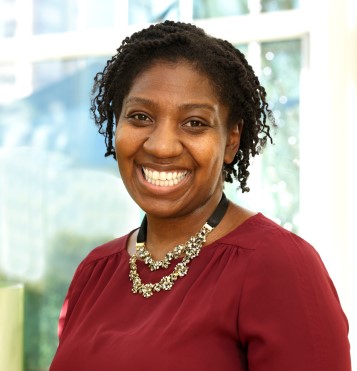How Pediatricians Can Help Create Safe Spaces for Black Youth

Rebekah Fenton, MD, FAAP
February 11, 2021
After the murder of George Floyd last year, returning to work felt heavy. Police brutality and its disproportionate impact on marginalized communities is not new, but each reminder is heartbreaking. Each new victim’s name and story leads to a recurrence of grief.
Amid the protests that followed, the clinic where I see patients remained open. On my first day at work after these events, my schedule was packed with mostly Black girls. This discovery brought a smile to my face. “I get to offer them the space that every Black person needs right now,” I thought. My new mission allowed me to channel my own emotions into the opportunity to help my patients process.
I started each conversation with a similar opening: “There’s a lot going on in the world right now. Before we start talking about why you’re here today, do you want to talk about how you’re feeling?” Some had a few words, others had plenty. They all seemed to relax when I asked the question. My momentary acknowledgement that we cannot continue with “business as usual” appeared relieving for them. It was for me, too.
My Twitter biography proudly states, “I dream of healing spaces for Black youth to thrive.” Honestly, I don’t yet know what that looks like. We hear more about the outcomes that disproportionately affect Black children, from birth weights to high school graduation rates and every age or health indicator in-between. The legacy of systemic racism runs deep and wide, and children are not exempt from its damage.
“The legacy of systemic racism runs deep and wide, and children are not exempt from its damage.”
When I daydream about safety for Black youth, I picture Black joy: a family sitting around the table together with plenty of food to eat, a young child laughing while playing at their neighborhood playground, a teenager discovering a new passion for the arts through a school program, a high school graduation day ceremony with parents and grandparents cheering from the stands. Through clinical practice, research, and advocacy, pediatricians can help make these dreams reality.
The work starts with seeing and honoring racial differences. Color blindness, or not “seeing race,” is actually damaging for Black youth. It blocks one from noticing and addressing how their experiences are challenged by systemic racism. Cultural humility is also a core practice. As a new resident to Chicago, I did not know much about its history when I arrived. I read several history books so I could understand how practices like redlining and government disinvestment led to poorly resourced neighborhoods where some of my patients live.
Humility also means that no matter how much I learn or hear, I can never make assumptions about a patient or their family’s life.
Instead, I ask. I assess social determinants of health or any new situation a family may be navigating. I explain that I am asking personal questions about health in a broad sense so I can offer any additional resources to help them thrive. I try to reduce stigma by mentioning that I ask everyone. Then, I listen to show I care and consider ways to support identified needs. I end with reassurances that they can always ask for assistance, in case their needs change.
Sometimes, we’re too afraid to even ask the questions because of our own perceived inadequacy. We feel like we can’t meet every need or worry that our cultural differences will be a barrier to connection. Even as a Black physician, I will never personally know what it’s like to grow up in Chicago, but I can create space for patients to be vulnerable about their true feelings and experiences. I can acknowledge that they may be living through hard things.
Sometimes our empathy is the best treatment, even if it is the only thing we can offer.
In a society that denies the innocence of Black youth and treats them like adults, we can work toward Black liberation by seeing and treating Black patients as the children and adolescents that they are. Embrace their youth, allow them moments of play, acknowledge their mistakes, and provide age-appropriate discipline. Let them be themselves.
Health care settings are not immune to systemic racism and pediatricians must account for and remove any institutional policies that criminalize Black youth and families. Are families that miss appointments assessed for unmet needs or are they discharged from the practice? Is security called because Black patients or parents are perceived as “aggressive” without evidence?
Even though health care is a necessary resource for all youth, some policies make hospitals and clinics feel unsafe for Black families. They are forced to choose between putting their family at risk or not getting the medical attention they need. Creating safety requires undoing systemic oppression.
Health care can become both a haven and an advocate for Black youth. Together, we can support Black futures and make dreams come true.
Some helpful resources with more information:
- The impact of racism on children’s health
- The health effects of racism and stressors
- Books to help discuss racism with children
- Black and Latinx children disproportionately affected by food insecurity
- A brief history of redlining in the United States
*The views expressed in this article are those of the author, and not necessarily those of the American Academy of Pediatrics.
About the Author
Rebekah Fenton, MD, FAAP
Rebekah Fenton, MD, FAAP, is an adolescent medicine fellow at Northwestern University and Lurie Children’s Hospital of Chicago.